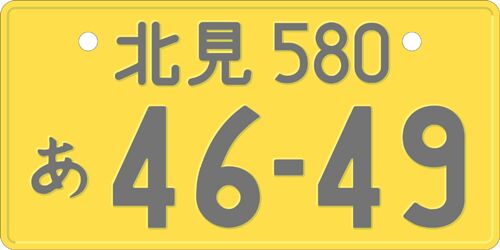Japan Restores Three Class System. For Cars

Japan has – as the confused reader of our monthly sales report from the Land of Nippon is woefully aware of – a two class car system. There are cars, and there are kei cars. Soon, there will be a three class system.
According to The Nikkei [sub], next year the Japanese government will introduce standards for “supercompacts.” Those are two-seat passenger cars, a class lower than minivehicles. Minivehicles, or kei cars, equipped with black-on-yellow tags, enjoy favorable tax and insurance treatment in Japan. They are limited by size and to a 0.66 liter engine.
The new “supercompact” two-seaters will not be allowed on highways. Because they aren’t, the thinking goes that they can be less crashworthy. Relaxed safety standards could lower their cost. Supposedly, there is “rising demand among people who drive only in the city and from older Japanese seeking an easy way to run neighborhood errands.”
According to The Nikkei, “domestic carmakers believe there is excellent potential demand for two-seaters. Not only do they appeal to elderly people looking for a convenient tool for running errands, but they also offer the benefit of lower carbon-dioxide emissions and can help ease traffic congestion in cities.”
They better check their ownership statistics.
The fortunes of minivehicles in Japan are fading. At one time, their combined share was 1/3 of Japan’s market. In the past years, they have not kept up with the market. What is particularly shocking is that minivehicles are predominantly a rural phenomenon in Japan. In rural areas with poor public transportation, over 90 percent of the households own a minivehicle. In cities like Tokyo, ownership drops to 10 percent. Here, you either own a real car, or none. As far as shopping goes: Even parking a bicycle turns into a problem.

Bertel Schmitt comes back to journalism after taking a 35 year break in advertising and marketing. He ran and owned advertising agencies in Duesseldorf, Germany, and New York City. Volkswagen A.G. was Bertel's most important corporate account. Schmitt's advertising and marketing career touched many corners of the industry with a special focus on automotive products and services. Since 2004, he lives in Japan and China with his wife <a href="http://www.tomokoandbertel.com"> Tomoko </a>. Bertel Schmitt is a founding board member of the <a href="http://www.offshoresuperseries.com"> Offshore Super Series </a>, an American offshore powerboat racing organization. He is co-owner of the racing team Typhoon.
More by Bertel Schmitt
Latest Car Reviews
Read moreLatest Product Reviews
Read moreRecent Comments
- MaintenanceCosts Poorly packaged, oddly proportioned small CUV with an unrefined hybrid powertrain and a luxury-market price? Who wouldn't want it?
- MaintenanceCosts Who knows whether it rides or handles acceptably or whether it chews up a set of tires in 5000 miles, but we definitely know it has a "mature stance."Sounds like JUST the kind of previous owner you'd want…
- 28-Cars-Later Nissan will be very fortunate to not be in the Japanese equivalent of Chapter 11 reorganization over the next 36 months, "getting rolling" is a luxury (also, I see what you did there).
- MaintenanceCosts RAM! RAM! RAM! ...... the child in the crosswalk that you can't see over the hood of this factory-lifted beast.
- 3-On-The-Tree Yes all the Older Land Cruiser’s and samurai’s have gone up here as well. I’ve taken both vehicle ps on some pretty rough roads exploring old mine shafts etc. I bought mine right before I deployed back in 08 and got it for $4000 and also bought another that is non running for parts, got a complete engine, drive train. The mice love it unfortunately.


































Comments
Join the conversation
Has this the same rules as European microcars? (two seater, 45kmph)